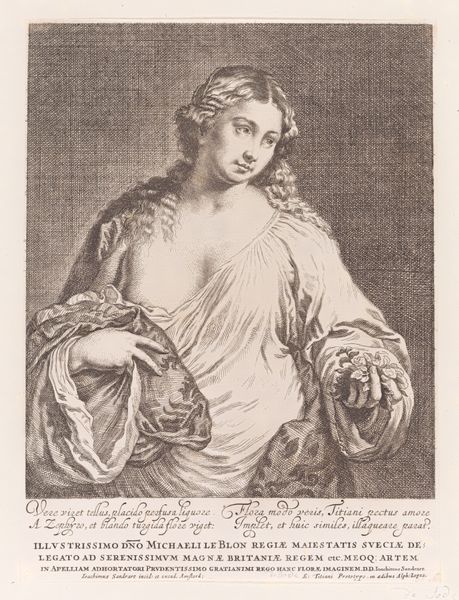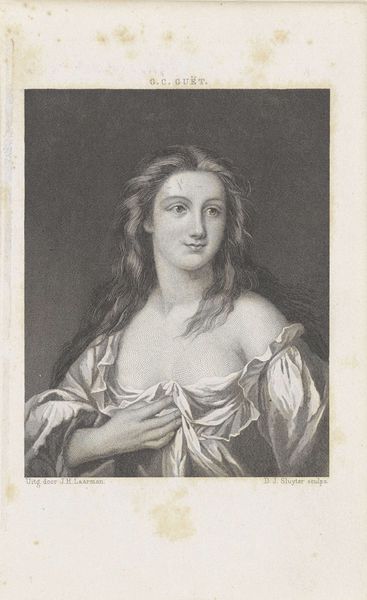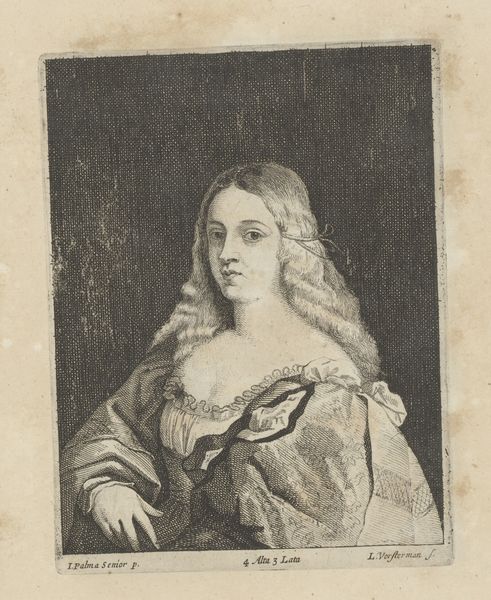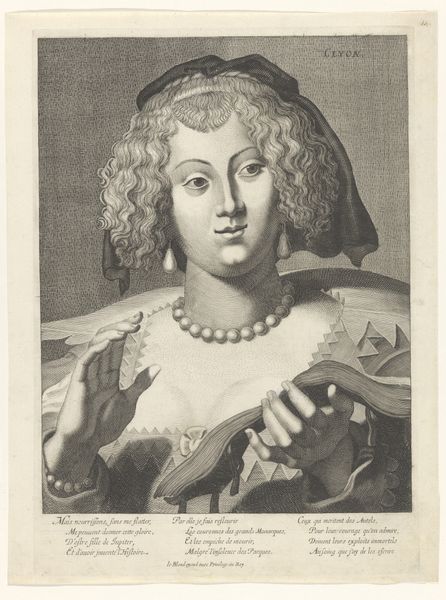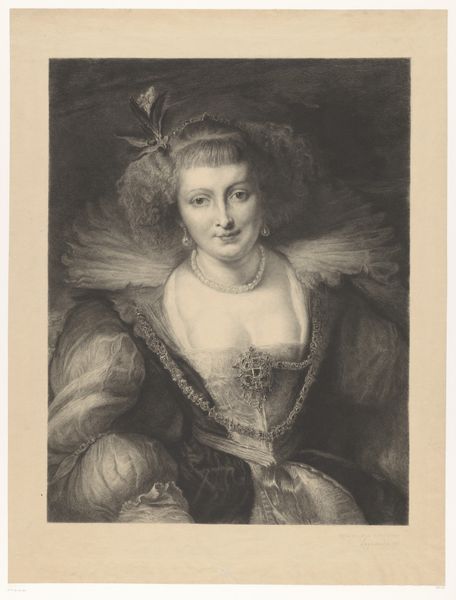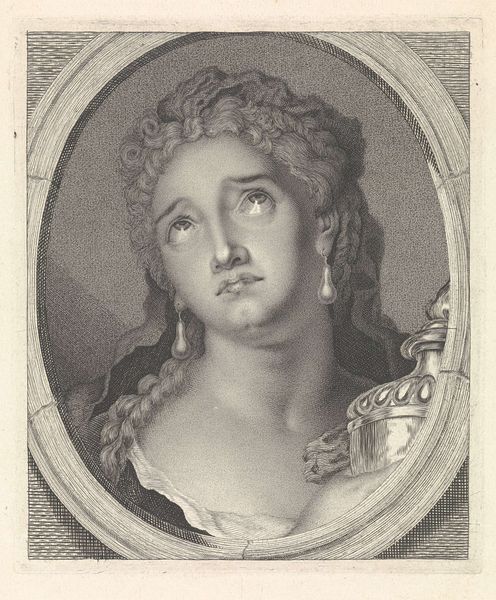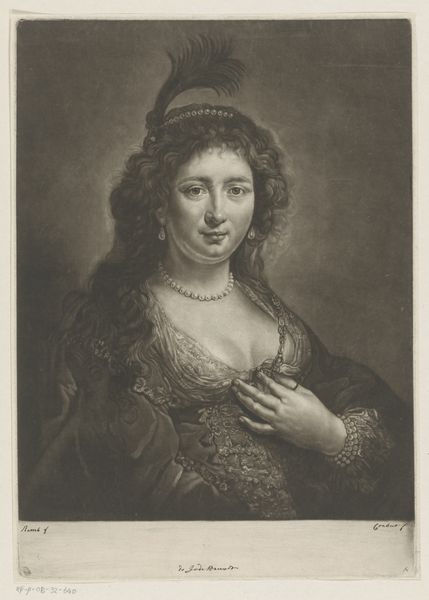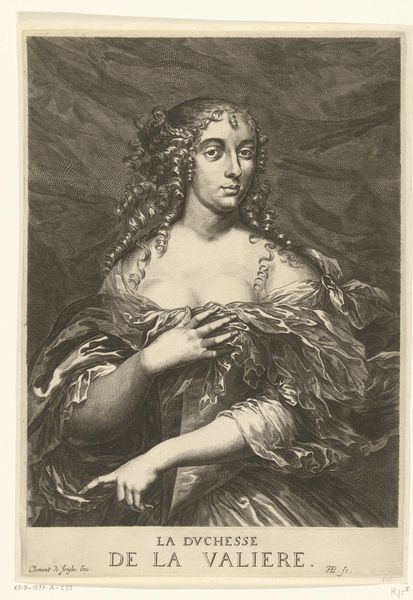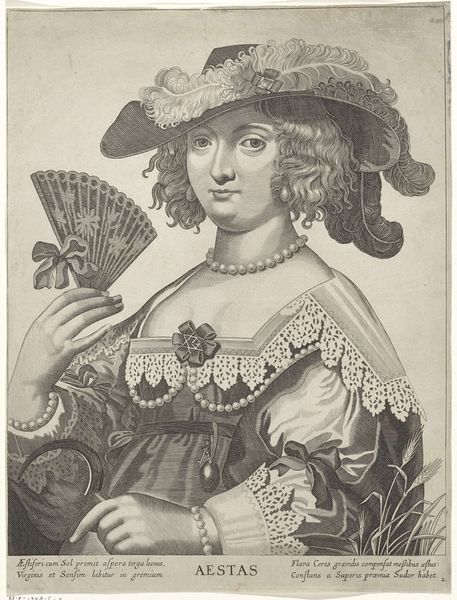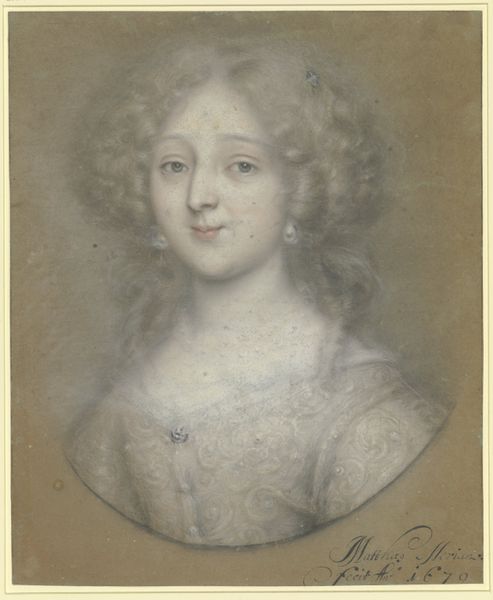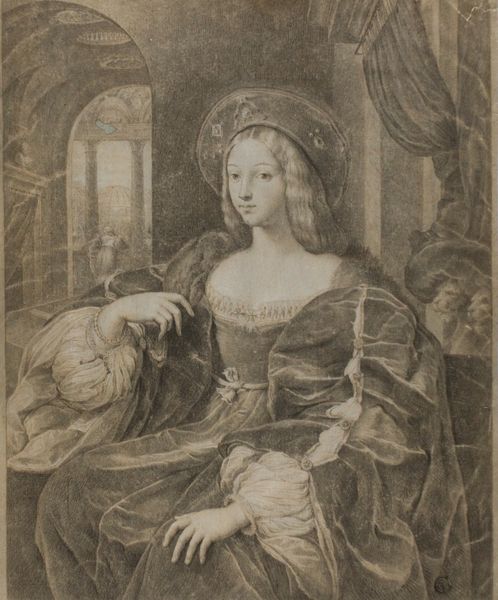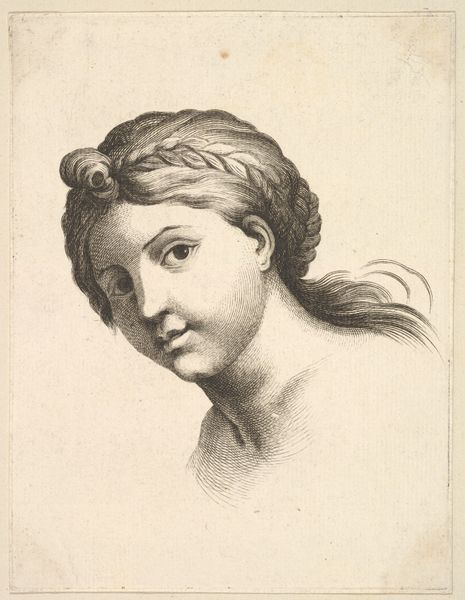
drawing, paper, ink
#
portrait
#
drawing
#
facial expression drawing
#
baroque
#
paper
#
portrait reference
#
ink
#
portrait head and shoulder
#
animal drawing portrait
#
portrait drawing
#
facial study
#
facial portrait
#
portrait art
#
sword
#
fine art portrait
#
digital portrait
Dimensions: height 260 mm, width 198 mm
Copyright: Rijks Museum: Open Domain
Curator: Let’s delve into this intriguing drawing titled "Heilige Catharina," or Saint Catherine, attributed to Jan de Bisschop, created sometime between 1648 and 1671. It's currently housed here at the Rijksmuseum. Editor: It has such a calm, almost serene presence. The sepia tones give it a soft, dreamlike quality. There is something incredibly gentle, almost melancholic, about her gaze. It makes you wonder what she's contemplating. Curator: It's rendered in ink on paper, a testament to the Baroque period's fascination with capturing both grandeur and intimate detail. The depiction of Saint Catherine situates it within the broader narrative of religious art, but her subtly defiant gaze could be interpreted as a challenge to established patriarchal norms. What do you think? Editor: Defiant, perhaps... Or maybe, just resolute? Look at the wheel she holds; it symbolizes her martyrdom, yes, but also speaks to the power of resilience and her intellectual resistance. It gives me goosebumps thinking about what that wheel represents to Catherine as a young noblewoman in the face of persecution and patriarchal subjugation. It almost looks as though she were about to throw it! Curator: Precisely. These symbols offer entry points for dissecting themes of female empowerment and resistance against oppressive structures prevalent in both historical and contemporary contexts. How do the materiality and the technique employed impact your reading? Editor: The flowing lines almost feel like watercolor, not ink; they really add to the fluidity of her hair, giving this solid subject a dreamy and somewhat unreal quality. It emphasizes how Catherine transcends from being a person into something iconic: an inspiration, a protector...a saint. The texture makes it accessible to a human experience, which makes her accessible as well. It softens this somewhat macabre theme in her narrative, right? Curator: Absolutely, and her representation prompts an essential conversation about how history and iconography intersect. The softness you mentioned provides nuanced readings of the Baroque's representation of female power within social, religious, and political landscapes. It complicates, rather than just illustrates. Editor: It gives such insight. I wonder about her dreams; about the moments between one brushstroke and another. This portrait makes me want to create art. Curator: Indeed, and it's those conversations, as much as its formal elements, that breathe life into art history.
Comments
No comments
Be the first to comment and join the conversation on the ultimate creative platform.

